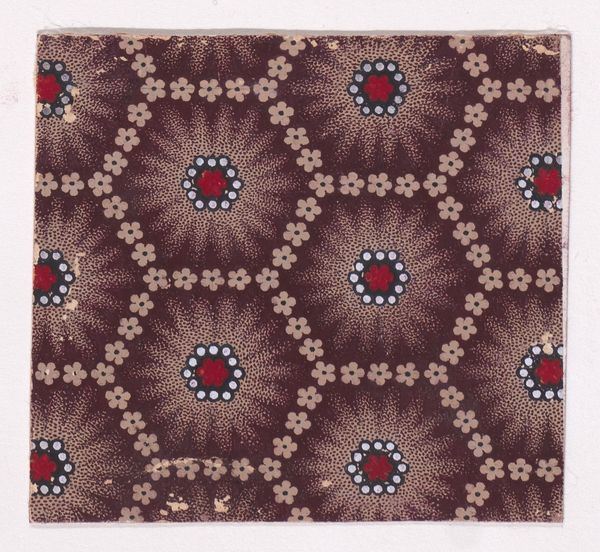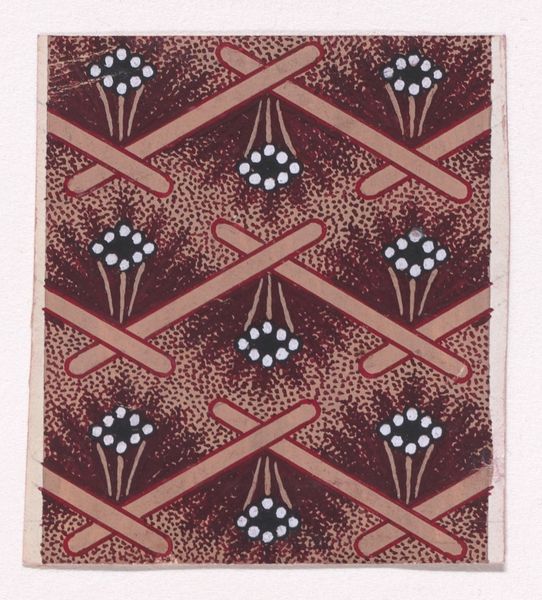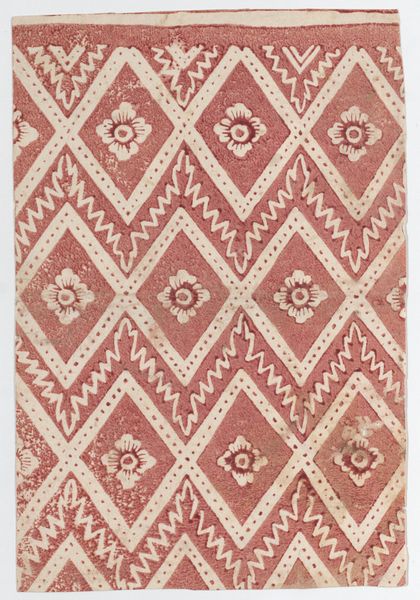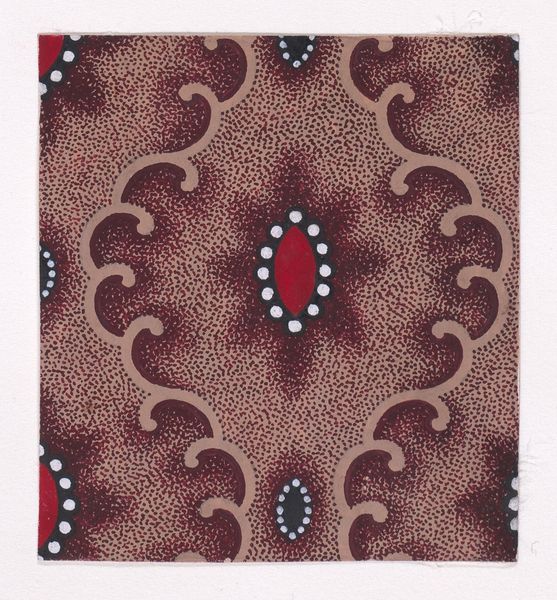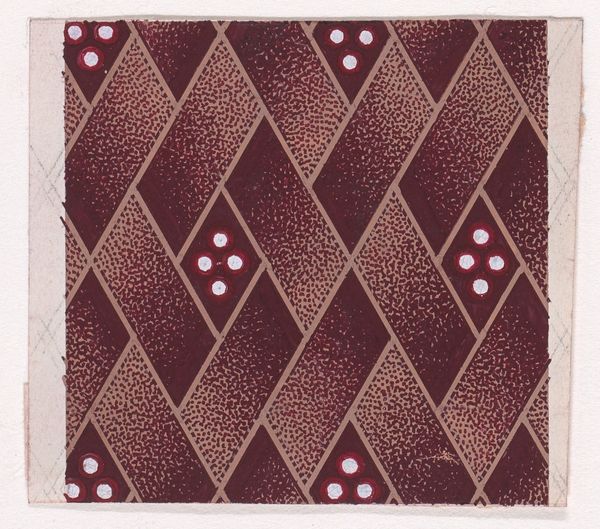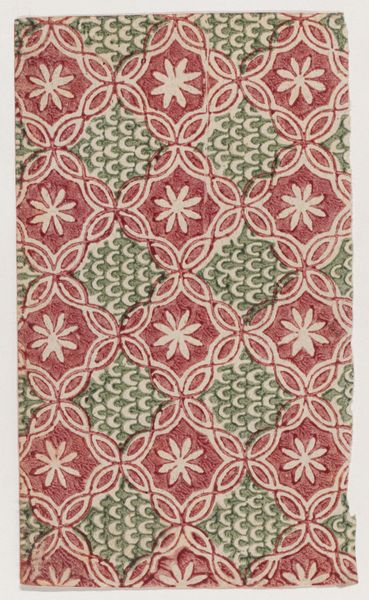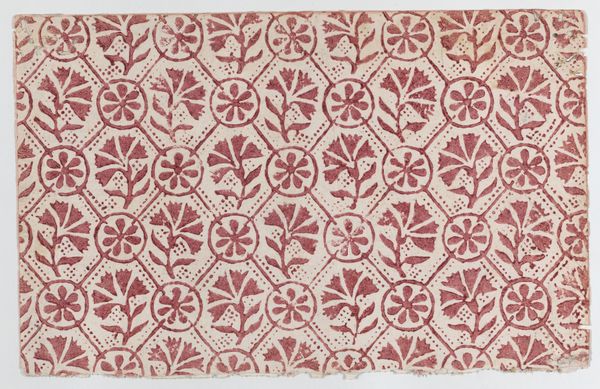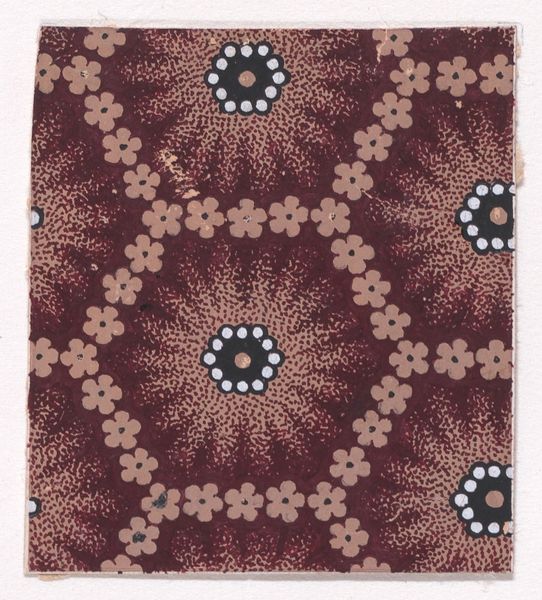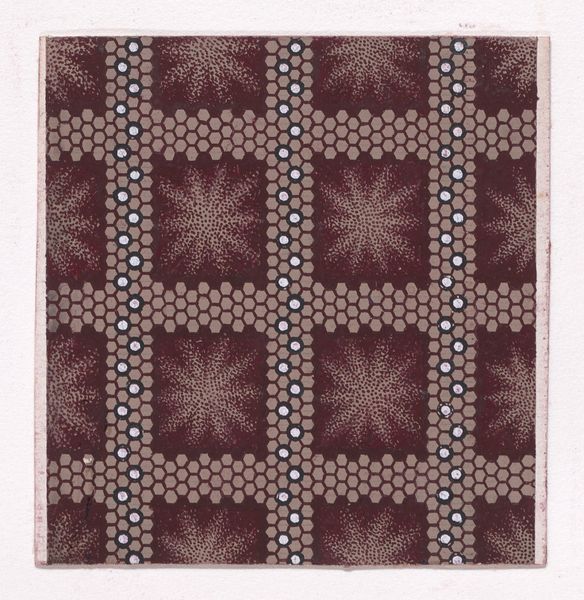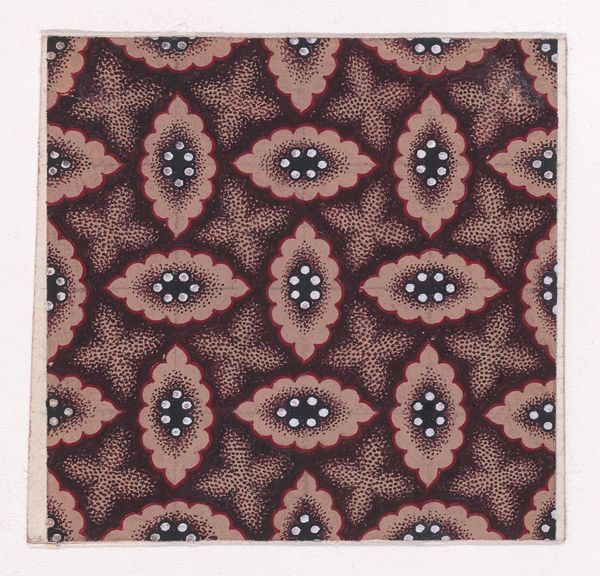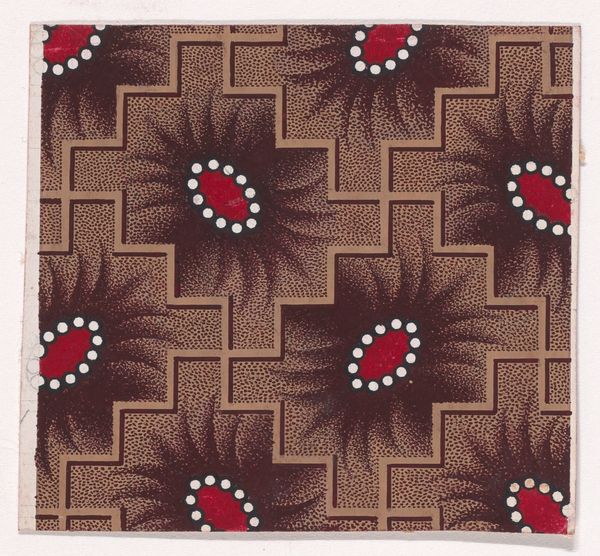
Textile Design with Basketweave Pattern Background, Small Rosettes Flanked by Two Leaves and Pearls 1840
0:00
0:00
drawing, textile
#
drawing
#
textile
#
organic pattern
#
geometric
#
flower pattern
#
textile design
#
decorative-art
Dimensions: Sheet: 1 3/4 × 1 7/16 in. (4.4 × 3.7 cm)
Copyright: Public Domain
Curator: Here we have a textile design dating back to around 1840. Its full title is “Textile Design with Basketweave Pattern Background, Small Rosettes Flanked by Two Leaves and Pearls” and it is held at the Metropolitan Museum of Art. It’s anonymous, which tells its own story, doesn't it? Editor: Absolutely. My first impression is how comforting this pattern feels, with its deep reds and earthy tones. The way the elements repeat and interlock creates a sense of unity. Do you find it pleasing as well, or does it lack excitement for you? Curator: I appreciate the formal qualities. The diagonal arrangement provides movement against the static repetition of the motifs. Look at how the artist alternates blocks—one textured, one smooth—it’s an interplay of surface and depth, pushing and pulling the viewer's eye. Editor: It makes you think about domestic interiors, doesn’t it? About who would have lived with fabrics designed like this and under what social circumstances they were produced. Curator: Precisely! I wonder about its societal role during that time. It evokes themes around bourgeois aspiration during the Industrial Revolution. The symmetry perhaps mirrors a desire for control during the disruptions of industrialization? Editor: The "anonymous" aspect speaks volumes, too. This kind of textile production often involved the exploitation of women, children laboring in mills. The beauty obscures a complex economic and social reality. Curator: I see that reading of oppression in production and market hierarchies but, perhaps, this could be a sample from design books meant to inspire and guide, rather than an artifact of actual textile creation? It would imply the possibility of amateur and home craftsmanship too! Editor: It highlights how our perceptions of art are so intertwined with its material and labor conditions. Appreciating its patterns is not just about what's pleasing to the eye, but about who made it and how they lived. Curator: Indeed. It also reflects on current art with its themes, showing how relevant even the designs are to culture's development as it moves forward. Editor: It adds another layer to our understanding. Let’s not forget to also look at the patterns, shapes and production models, after all they matter equally in order to completely describe an artwork!
Comments
No comments
Be the first to comment and join the conversation on the ultimate creative platform.
